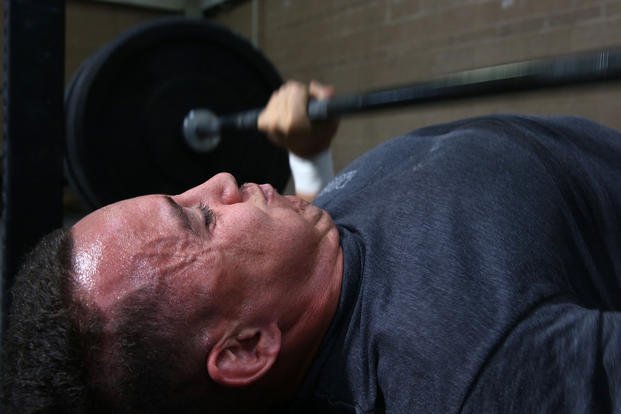Continuing with the series, “Different Athletic Types That Join the Military," I address a new type of athlete with many strengths.
As with any athlete, there are some weaknesses that CrossFit athletes must correct when preparing for military service. CrossFit -- or any other athletic activity, for that matter -- does not have all the answers to the needs of the tactical athlete, but it has many of the tangible and intangible requirements needed for the new military recruit.
CrossFit strengths for the military recruit (intangibles)
Mental toughness. CrossFit workouts require a high-intensity mindset with the ability to push past exhaustion in a variety of the high intensity interval training (HIIT)-type workouts that make up many of the CrossFit workouts. Training hard and not quitting develops a form of mental toughness and resilience that can go a long way for the young military recruit.
Competitor/teammate. The CrossFit athlete wants to win and prefers being best at something. But being a helpful supporter to fellow teammates, recruits and other members of the military is engrained in the CrossFit group-training programs. There is nothing wrong with training to compete, but being a good, supportive team player with fellow recruits is a must for new military members.
CrossFit strengths for the military recruit (tangibles)
Hybrid athlete of strength and muscle stamina. CrossFit athletes have a unique combination of strength from lifting weights and performing higher-repetition calisthenics with lighter weights. These qualities will bode well for the CrossFit athlete during boot camp and even harder selection programs.
Workouts that mix carries, crawls, lifts, body-weight exercises and short, fast running create a high level of anaerobic endurance and general physical ability. Pushing your anaerobic threshold is tough and builds a strong and tough athlete.
Foundation building. The ability to run and ruck without overuse injuries, as long as the progressions are logical, is there for the CrossFit athlete. That is because of tough resistance training, pushing sleds and handling the vertical stresses of many workouts where carries and running are involved. This foundation makes it easy to build a cardio base for running, rucking and other load-bearing activities for the CrossFit Athlete. You just have to put in the time.
Obstacle courses. CrossFit athletes do well with obstacle courses as long as they practice rope climbs and use their legs to climb and save their grip strength. CrossFit workouts are great for the high-intensity obstacle courses and timed events.
CrossFit weaknesses for the military recruit
Longer cardiovascular endurance. Regardless of your workout programming prior to joining the military, no 30-minute workout will prepare you adequately for a day of military/special-ops training. Short fast runs are great, but learning how to pace six- to eight-minute/mile runs, 12- to 14-minute/ mile rucks and even mile-long swims will help you build the cardiovascular endurance needed to take on long events on a challenging day in recruit training. By adding a longer endurance event to the back end of a typical CrossFit workout, you will have a good combination that will build the military hybrid elements of tactical fitness.
Putting in the time. There is nothing wrong with a short 20- to 30-minute workout, especially for busy people with full-time jobs, families and other commitments. However, getting better at longer workouts also is required to be prepared adequately for a typically long day of military training. If CrossFit is what you love, keep doing it, but do other events like running longer distances, rucking with 40- to 50-pound backpacks and/or swimming -- depending upon the branch of service you are seeking.
Make CrossFit your warmup, then add to it with the above cardiovascular and calisthenics events. Adding longer rest periods to AMRAPs (as many reps as possible) and exhaustive timed workouts may work in your favor as the final preparation to military training.
Specifics of the training. You need to master push-ups, sit-ups, pull-ups (no kipping) and 1.5- to three-mile timed runs, depending on your branch of service, to get selected for training. Running longer mileage, rucking longer hours and swimming/techniques are some of the other longer-endurance requirements the CrossFit athlete must address specifically to get to and through the training programs.
Regardless of your athletic background, becoming a tactical athlete requires molding your current strengths to the service requirements and focusing on current weaknesses that could be detrimental to the new recruit or spec-ops student.
If you are a current CrossFit athlete, make sure you add the longer cardio events and more calisthenics to your training to work on your cardiovascular endurance (running, swimming, rucking).
Previous athletes discussed:
Cross Country Endurance Running Athlete
Stew Smith is a former Navy SEAL and fitness author certified as a Strength and Conditioning Specialist (CSCS) with the National Strength and Conditioning Association. Visit his Fitness eBook store if you’re looking to start a workout program to create a healthy lifestyle. Send your fitness questions to stew@stewsmith.com.
Want to Learn More About Military Life?
Whether you're thinking of joining the military, looking for fitness and basic training tips, or keeping up with military life and benefits, Military.com has you covered. Subscribe to Military.com to have military news, updates and resources delivered directly to your inbox.


















